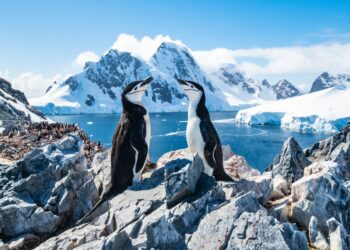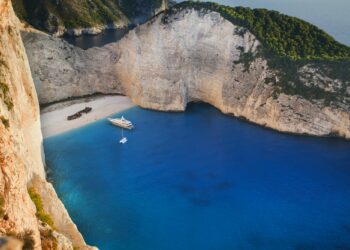Nepal is a great place for explorers, backpackers and travel enthusiasts the world over. I know two of my good friends Vik and Manuel, who had Nepal on their ‘to-do’ list while travelling to India. Yet, there are a few people who miss visiting Nepal due to time constraints or other reasons. While further reading the post, you will know why you should grab the chance to be in Nepal for all the right reasons.
Looking Back
I am writing this travelogue in retrospect after almost two years and three months of time lag since my visit to Nepal. (Thank God for the timestamps in photos as they help one to trace back exact dates!) It seems even more glamorous now, having been there and being part of Nepal’s sound, people, and culture.
Affiliate Disclaimer: Our blog posts may contain affiliate links. If you make a purchase through these links, we receive a modest commission at no extra cost to you. These commissions help us fund our team of travel writers, allowing us to continue providing you with the latest travel news, tips, and inspiration. Your support keeps this blog alive and thriving, and we appreciate it immensely. Thank you!
Understand Nepal
Nepal is a country landlocked between India and China. It has a lot to offer in different terrains like plains, terai, mountains, valleys, rivers and hills. It is divided into 14 elevation or administrative zones, nine developing areas, five major cities and 75 districts.
In Nepal, mostly Nepali and Awadhi are spoken locally; however, you will easily find Hindi or English people (BTW, young Nepalese love Indian Bollywood music). The primary occupation of people is agriculture; others work in industries or the service industry.
Travel Tip: Some places can be less known even to the locals; hence, please find out the right district in which a place is located in India and Nepal. This will ensure you reach the right place by road and ensures timely postal delivery if you want to send back photos to your newly found friends.
Nepal Highlights
Nepal’s capital is Kathmandu valley or Bagmati valley. It is home to one of the most sacred Hindu religious and UNESCO world heritage sites, the Pashupatinath temple of Lord Shiva. The temple is pagoda or Dravidian style with its tiered tower structure. The priests there are called Bhattas, and they are generally from Karnataka. Nearby on the Bagmati river is Arya ghat (get lustral/purifying water of Pashupatinath temple here) and Bhasmeshwar ghat, the most used site for human burial in Nepal. Across the Bagmati River, there are 15 votive shrines called the Pandra Shivalaya.

Pashupathinath temple, Kathmandu, Nepal
Boudhanath Stupa is the largest spherical chorten of the world, UNSECO world heritage site and an important Buddhist place of worship. The Stupa in the form of the mandala is phenomenal and peaceful at any hour of the day. At first, you will not see any difference between Boudhanath Stupa and the second major Stupa, the Swayambhunath. If you only look at the pictures, you will not find the difference quickly; however, at Swayambhunath, the colour around Buddha’s eyes is golden, and at Boudhanath, it is blue. At night Boudhnath Stupa looks auspicious when many mud lamps are lit up. There are around 50 Tibetan Gompas or monasteries around Boudhanath, which you can visit.
Swayambhunath Stupa
Swayambhunath Stupa is the only second revered Stupa in Nepal and is also a UNESCO world heritage site. The Tibetan name of the site means sublime trees, and per the local Newari name for the complex, Singgu meaning ‘self sprung. On each side of the Stupa are Buddha eyes representing wisdom and compassion, signs of enlightenment. You can see monasteries, museums and libraries there too apart from enjoying the peacefulness.
Durbar Squares
In Nepal, there are three durbar squares. All are UNESCO world heritage sites, namely the Kathmandu Durbar Square or Hanuman Dhoka Durbar Square Bhaktapur (bhagaon, Taumadhi) and Patan palace squares with many temples. The Bhaktapur durbar square is famous for the Nyatapola temple (highest pagoda style temple in Nepal), 55 Windows Palace and master artwork of the Golden Gate.
Nepal is the birthplace of Mahatma Siddhartha Gautam Buddha (also called Tathagatha), the founder of Buddhism. The home of Gautam Buddha, Lumbini in the Rupandehi district, is being visited by thousands of pilgrimages and tourists.
Siddharthanagar is the administrative seat of Rupandehi District. It is known as the “Gateway of Lumbini”. Lumbini is 25 kilometres away to the west of Siddharthanagar. Janakpur in the Dhanusha district is the birthplace of Sita (Lord Ram’s wife) and where the famous Janakpuri temple is located.
Natural UNSECO world heritage sites in Nepal are the royal Chitwan National park (in Chitwan district) and Royal Bardia National park in Bardia district. The Bardiya national park is a restricted area stretching within 968 kilometres adjoined by Karnali and Babai river banks. At Chitwan national park, you can see one-horned rhinos, tigers, crocs, birds and more wildlife.
Nepal is an excellent location for mountain trekkers of all sorts, the experienced and the less experienced. Nepal has the eight highest peaks of the Himalayas, namely Mt. Everest, the highest peak of the world (8848 metres) in the Khumbu region of Sagarmatha zone, Kanchenjunga 3rd highest peak of the word (in Northern Kanchenjunga), Lhotse (Everest Group) is the 4th highest peak, Makalu (Makalu Mahalangur)is the 5th highest peak, Cho Oyu ( Khumbu Mahalangur) is the 6th highest peak, Dhaulagiri (Dhaulagiri) is the 7th highest peak, Manaslu (Mansiri) is the 8th highest peak and Annapurna is the 10th highest peak.
The Himalayas are rightly known as the abode of the snow and also the home of Lord Shiva. The Himalayas are divided into four parts; the 6000-metre peaks called the Greater Himalayas, high mountains with 4000-metre summits, Middle hills or Mahabharata Range with 1500-3000-metre summits and lastly, 1000-metre peaks called the Siwaliks or Churiya hills. The Himalayas receive the third-highest deposit of snow after Antarctica and the Arctic.

Trekking Points
- Annapurna Circuit north of Pokhara and trek the Ghandruk or Tatopani, Manang, Muktinath, and Jomson (driest place)
- Khumbu circuit to trek Namche Bazar (Sherpa community), Tengboche and visit the 19 days Mani Rimdu festival in November
- Helambu and Langtang circuit and cover Gosainkund or the Trishuli Lake
- Tilicho Lake is the highest lake in Manang.
- Trek Mt. Everest in Sagarmatha zone. Visit Sagarmatha National Park
- Trek Mt. Kailash (Kora) in Tibet.
Must-See Other Places
- The mustard making village of Khokana/Gokana in Lalitpur district
- Lumle is the wettest place in Nepal (Pokhara)
- Like Spiti in Leh, visit the driest place, Jomson.
- Picturesque Daman and Tansen near Pokhara
- Oldest village Panauti in Kavrepalanchok district
- Dhampus is a fabulous village located in the Kaski district, offering great views of snow-clad mountains.
- Manakamana temple in Gorkha district is the sacred temple of the Hindu goddess Parvati.
- Learn; see how the Gurkha used their Khukuri for defence and just about everything.
- Do a bungee in Bhote Kosi (river of Tibet) or Rongshar Tsangpo river, which credits the third-highest jump from a suspension bridge in Kodari, Dolakha district. It is 525 feet high or 160 meters high.











